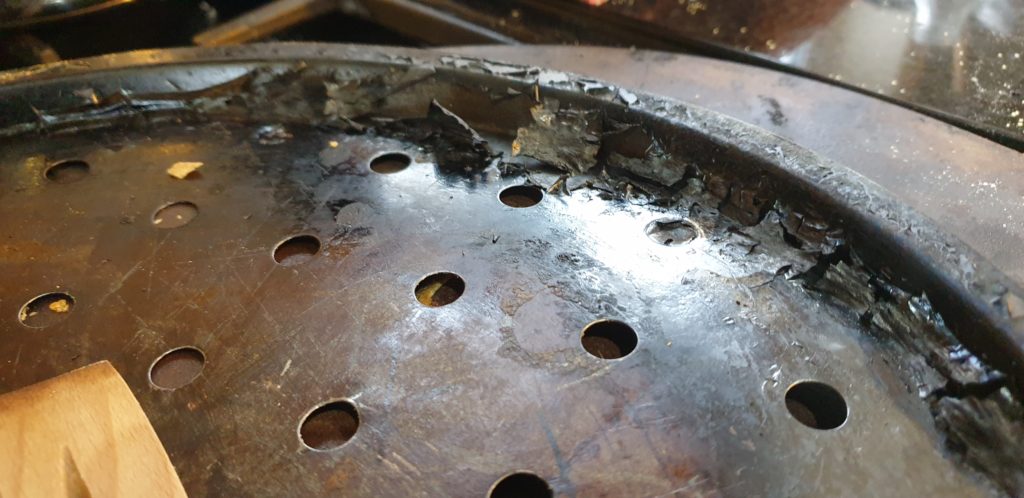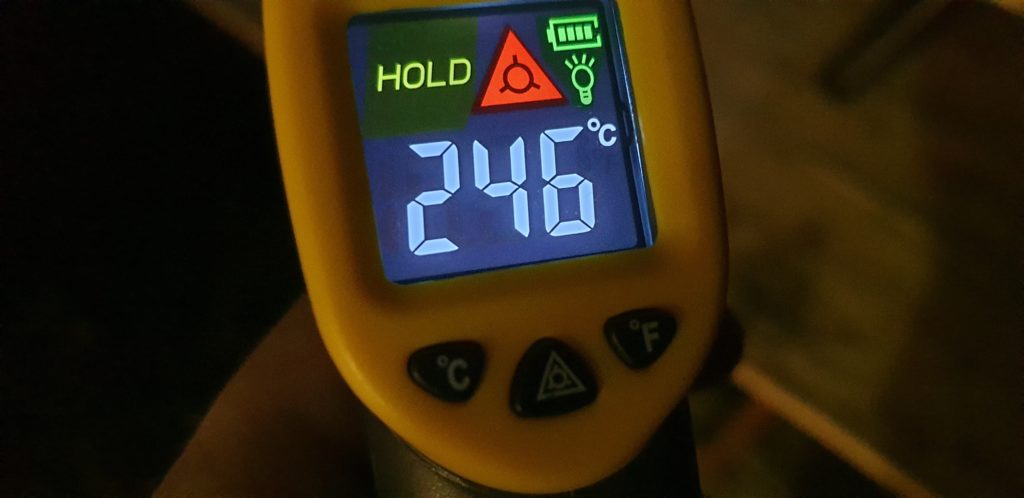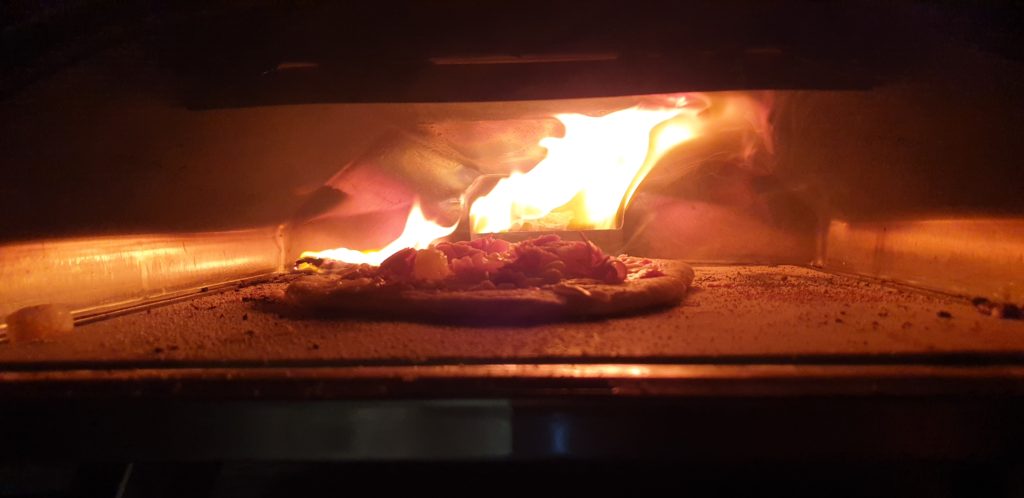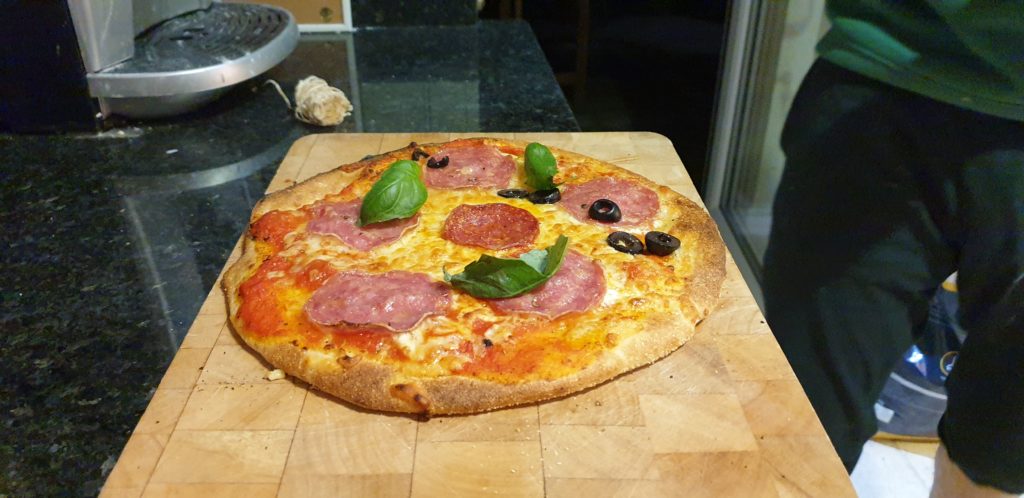Earlier this month, I made my first attempt at cooking pizza in an outdoor wood-fired oven. I’ve been making pizza for years: how hard can it be?

It turned out: pretty hard. The oven was way hotter than I’d appreciated and I burned a few crusts. My dough was too wet to slide nicely off my metal peel (my wooden peel disappeared, possibly during my house move last year), and my efforts to work-around this by transplanting cookware in and out of the oven quickly lead to flaming Teflon and a shattered pizza stone. I set up the oven outside the front door and spent all my time running between the kitchen (at the back of the house) and the front door, carrying hot tools, while hungry children snapped at my ankles. In short: mistakes were made.

I suspect that cooking pizza in a wood-fired oven is challenging in the same way that driving a steam locomotive is. I’ve not driven one, except in simulators, but it seems like you’ve got a lot of things to monitor at the same time. How fast am I going? How hot is the fire? How much fuel is in it? How much fuel is left? How fast is it burning through it? How far to the next station? How’s the water pressure? Oh fuck I forget to check on the fire while I was checking the speed…

So it is with a wood-fired pizza oven. If you spend too long preparing a pizza, you’re not tending the fire. If you put more fuel on the fire, the temperature drops before it climbs again. If you run several pizzas through the oven back-to-back, you leech heat out of the stone (my oven’s not super-thick, so it only retains heat for about four consecutive pizzas then it needs a few minutes break to get back to an even temperature). If you put a pizza in and then go and prepare another, you’ve got to remember to come back 40 seconds later to turn the first pizza. Some day I’ll be able to manage all of those jobs alone, but for now I was glad to have a sous-chef to hand.

Today I was cooking out amongst the snow, in a gusty crosswind, and I learned something else new. Something that perhaps I should have thought of already: the angle of the pizza oven relative to the wind matters! As the cold wind picked up speed, its angle meant that it was blowing right across the air intake for my fire, and it was sucking all of the heat out of the back of the oven rather than feeding the flame and allowing the plasma and smoke to pass through the top of the oven. I rotated the pizza oven so that the air blew into rather than across the oven, but this fanned the flames and increased fuel consumption, so I needed to increase my refuelling rate… there are just so many variables!

The worst moment of the evening was probably when I took a bite out of a pizza that, it turned out, I’d shunted too-deep into the oven and it had collided with the fire. How do I know? Because I bit into a large chunk of partially-burned wood. Not the kind of smoky flavour I was looking for.
But apart from that, tonight’s pizza-making was a success. Cooking in a sub-zero wind was hard, but with the help of my excellent sous-chef we churned out half a dozen good pizzas (and a handful of just-okay pizzas), and more importantly: I learned a lot about the art of cooking pizza in a box of full of burning wood. Nice.